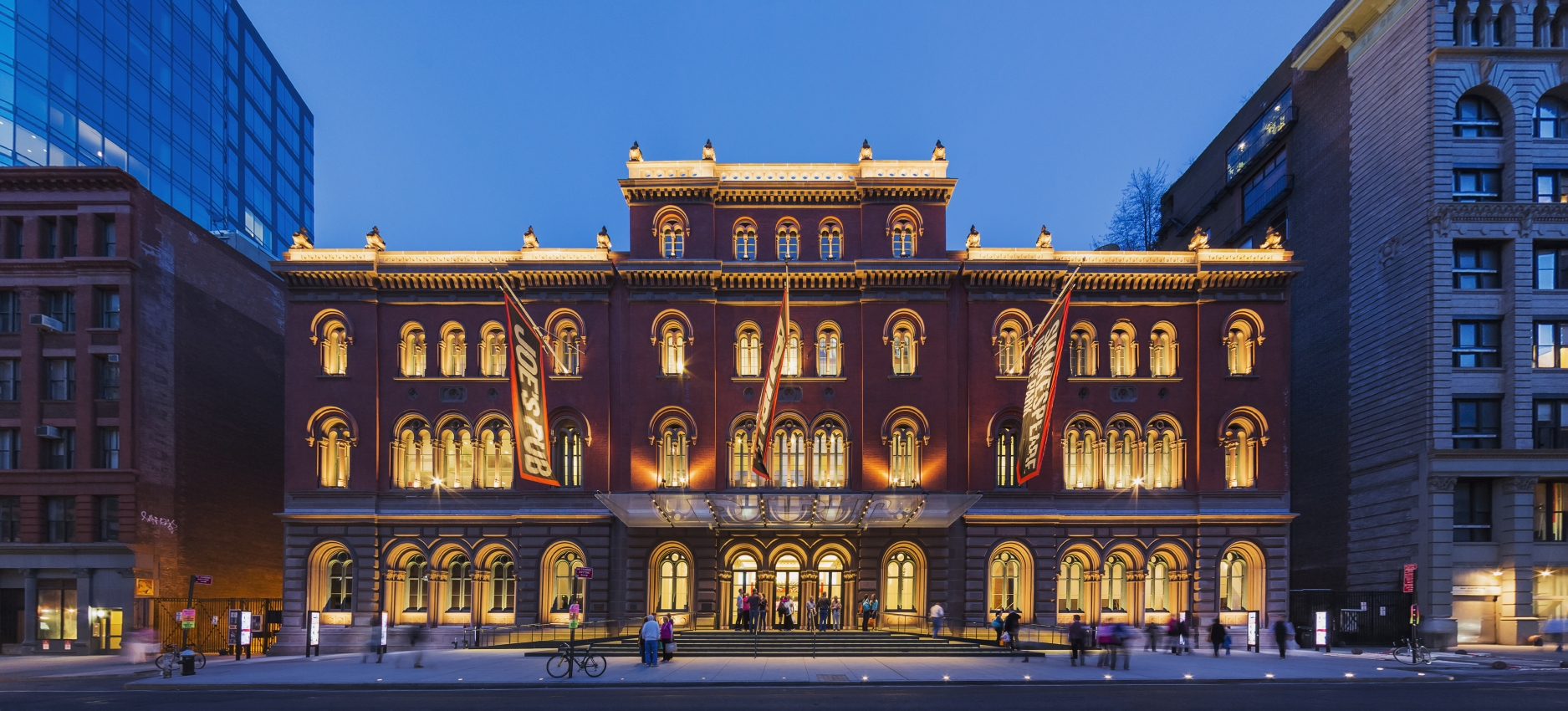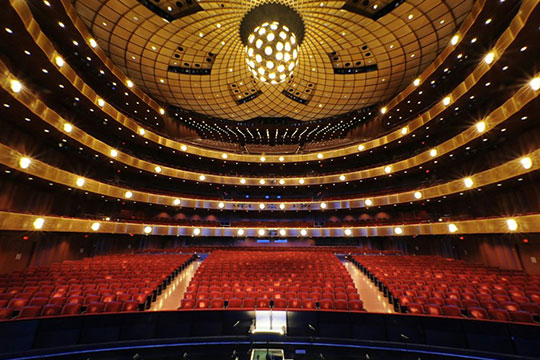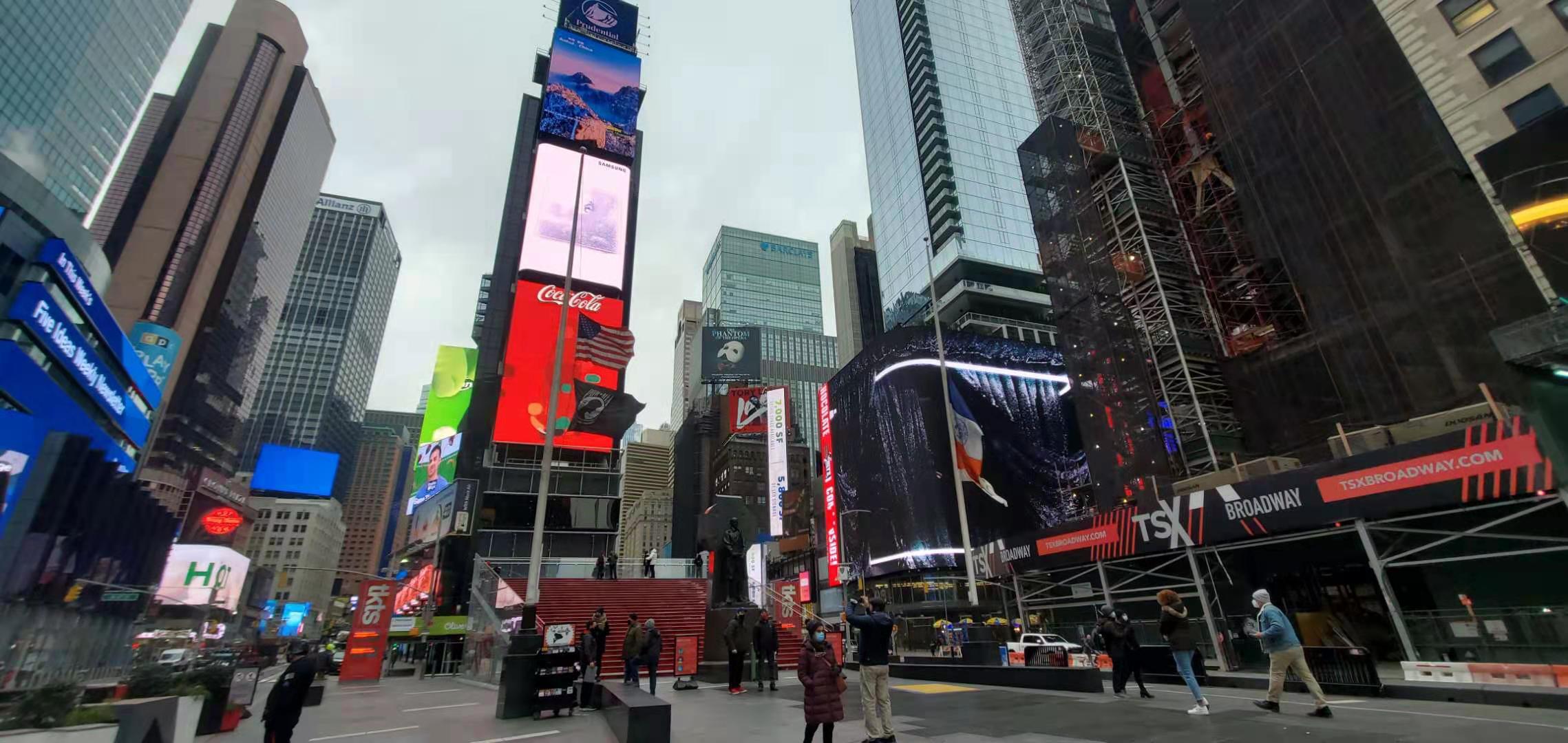Land Acknowledgement
The land on which I reside right now as Jersey City is part of the ancient homeland and traditional territory of the Lenape people, who have Munsee, Unami, and Unalachtigo, three social divisions determined by language and location. The peaceful Lenape had remained the natural residents of the land for thousands of years before they were displaced by white colonists. I pay high respect to Lenape people’s past, present, future, their restoration of culture, and continuing presence on the land. I feel deeply grateful to be here today on their lands.

Source: https://www.architectmagazine.com/project-gallery/the-public-theater-at-astor-place
As a theatre lover, my joy soared through the sky on hearing about the possible re-opening of theatres in April in NYC. According to the authorities, indoor venues will be allowed to reopen at 33% capacity, with up to 100 people indoors and 200 outdoors (150 and 500 respectively if testing is required). However, as a student in the field of Arts Administration, I’m crossing my fingers everyday for nonprofit organizations, especially during this coming reopening.
So, 33%, what does it mean on the theatres’ side of the story? A research project by me and my teammates (Megan Fairchild, Chang Li, and Ran Yi) told us that based on New York City Ballet’s ticket revenue ($39,757,000) in 2019 and limit the capacity to 400(15% of their total capacity, but still four times what’s allowed indoors), the NYCB would need to either increase their average ticket prices to 261%, cut off more than half of the staff, or lower the average salary to half, which would be utterly ridiculous for any rational mind, let alone the administrators.

Source: https://www.landmarkwest.org/nycballet/
And, the capacity we put here is 400 seats. Imagine how even more ridiculous it would get for only 100 indoors. Some may say they rely more than half on given revenue as a non-profit, but what kind of generous gifts and donations should they look for to cover more than 20 million losses in ticket sales? Also, what if they open anyway for the sake of art itself? Can they survive mostly on the revenue of funding and giving? Maybe for the well-established nonprofits who have been saving and preparing for an unforeseen long-winter like this, but for some small-scale ones, they may just shut down again or forever due to any reason from the cases climbing up to audience’s lack of safety in such venues. Anyhow, I beg for overly generous donors to show up, and name every single piece that the theatres have left.
What a promising vision! One effective (maybe) solution so far, as Broadway also plans to proceed, is in pop-ups. Beginning again with a smaller scale of operation is a smart and cautious move that allows some space for organizations to practice and react to any possible shifts. Same thing for the non-profits.
What differentiates nonprofits from forprofits is not just tax-exemption, but the mission and the soul. Serving certain purposes, nonprofits seem to be more obligated to reopen, even when forprofits could do so (or not) out of profits concerns. To addresses this, I drafted a few suggestions for nonprofits’ reopening based on what I’ve read so far:
- Start with a smaller scale of everything from daily operations to programming. Don’t think too fast on going back to what’s before pandemic, at least not before the announcement of full capacity. Changes may still occur in the future and smaller scales could be more adaptive.
- Expand but don’t lean on giving revenue. This is quite a dilemma for nonprofits now as the donors and sponsors may save them through this hard time without any in-person live performance services but exactly out of no live performance, they may lose a great deal of them who have been supportive during the good times. In this case, they could look at a more diverse potential donors and seize the chance of developing a new donor base.
- Consider possible outdoor spaces, and bring the mission there. This benefits the ticket sales as it largely expands the capacity. One good example is the Barter Theatre in Virginia, where its administrators transformed it into a drive-in outdoor venue that adheres to social distancing. Unfortunately, that shift would be much harder to pull off in big cities like New York.
- Social justice should continuously be valued and emphasized even when cutting off the scale and embracing changes in various aspects.
I sincerely hope all theatres that provide a public service while allowing people to immerse themselves in stories have a sustainable and vibrant future.

By Alice Yang-A Cloudy Day at Times Square
Notes:
1.Why talking about NYC? Majorly for its diversity, prominence and centrality for performing arts(some interesting points argue the pandemic may change this.) Personally, this is where I study and live. I recognize there is potential neglect of such issues in rural areas.
2.The NYCB case was done as one of my final group projects with Megan Fairchild, Chang Li, and Ran Yi, where Megan is a principal dancer with NYCB and thanks to her most data was collected.
Sources
“Road To Reopening: New York City Arts And Entertainment Venues ….” 3 Mar. 2021, https://newyork.cbslocal.com/2021/03/03/coronavirus-covid-19-new-york-city-arts-and-entertainment-venues-reopening/. Accessed 5 Mar. 2021.
“What We Talk About When We Talk About … – American Theatre.” 17 Feb. 2021, https://www.americantheatre.org/2021/02/17/what-we-talk-about-when-we-talk-about-reopening/. Accessed 5 Mar. 2021.
“The Endless Ride: Nonprofits that Reopen Only to Close Again ….” 28 Oct. 2020, https://nonprofitquarterly.org/the-endless-ride-nonprofits-that-reopen-only-to-close-again/. Accessed 7 Mar. 2021.
“Smaller Entertainment Venues Set To Reopen Next Month In New ….” 4 Mar. 2021, https://newyork.cbslocal.com/2021/03/04/ny-entertainment-venues-reopen-next-month/. Accessed 8 Mar. 2021.
“Despite Less Funding, Rural Arts Groups Push On. These 4 Groups ….” 13 Oct. 2020, https://dailyyonder.com/despite-less-funding-rural-arts-groups-push-on-these-4-groups-show-how-it-can-be-done/2020/10/13/. Accessed 7 Mar. 2021.

Alice(Honghui) Yang 杨鸿辉
She/Her/Hers
DSF Digital Internship Participant
NYU Steinhardt
Master of Arts in Performing Arts Administration, Class of 2021